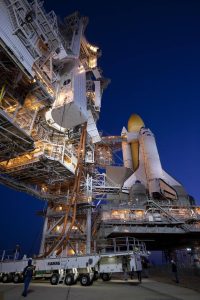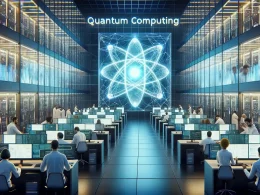Hitching a ride to Low Earth Orbit (LEO) is about to become a reality for affluent private citizens, extending beyond just elite trained astronauts. If NASA and various pioneering space companies achieve their goals, space tourism could launch as early as this year.
Growing Demand for Space Travel
George Whitesides, CEO of Virgin Galactic, reports an overwhelming interest among space enthusiasts, with over 600 customers having made deposits for a ride on SpaceShipTwo. Virgin Galactic is currently transitioning its operations to Spaceport America in New Mexico, preparing for commercial flights.
Making Spaceflight More Accessible
Blue Origin is focused on operational reusability to make space more accessible to the general public. Cornell explains that the company’s New Shepard spacecraft is designed to drive down costs through reusable vehicles and efficient operational methods.
The New Shepard capsule promises an incredible experience, taking astronauts on an 11-minute journey to space, where they will float in weightlessness and enjoy views through the largest windows in spaceflight history before descending back to Earth.
International Efforts in Space Tourism
While most space tourism activities are centered in the U.S., several countries are eager to participate. Virgin Galactic has partnered with international entities in Italy and the UAE to explore opportunities for local space access.
The U.K. is also taking steps to capitalize on the space tourism market, with government incentives in place to support commercial spaceflight initiatives.
Alternative Space Experiences
In Spain, Zero 2 Infinity is developing a high-altitude balloon flight that ascends 36 kilometers into the stratosphere. Founder Jose Mariano Lopez-Urdiales believes the unique view of Earth from this altitude is what tourists truly desire, and this experience is less risky and costly than traditional spaceflights.
Zero 2 Infinity has successfully tested a half-scale vehicle and plans to conduct full-scale flights soon, with tickets priced at approximately $112,000 for a two-hour journey above the atmosphere.
Luxury Accommodations in Space
Orion Span is also gearing up to enter the space tourism arena with plans for Aurora Station, a luxury space hotel that could host tourists and crew. Co-founder David Jarvis emphasizes the importance of the overall customer experience, focusing on teamwork and preparation for living in space.
Orion Span aims to streamline astronaut training for guests, allowing them to bond and prepare for their journey together, enhancing their experience in orbit.
As the first commercial spaceflights draw nearer, the excitement continues to build among the public, governments, and innovators alike. Many anticipate that the successful launch of space tourism will catalyze further developments in the industry.
Future of Space Tourism
Lopez-Urdiales believes we are transitioning through different phases of space activity. The first phase involved government programs like Apollo, the second is characterized by billionaire-backed projects, and the third will involve a diverse range of entrepreneurs competing for market share. Only then will space tourism become sustainable.
NASA’s Push for Private Investment
With the ISS nearing the end of its operational life in the next eight years, NASA is urging the private sector to ramp up activities in LEO. The agency is enabling private astronauts to visit the ISS on commercial vehicles and engage in profit-generating activities.
NASA’s CFO Jeff DeWitt noted that commercializing LEO will allow the agency to focus on ambitious missions, including landing the first woman and the next man on the Moon by 2024.
The agency has also made strides in its ISS commercial use policy, allowing for-profit manufacturing and marketing, and offering up to two private astronaut missions annually.
NASA seeks creative solutions from the entrepreneurial sector to drive the emerging space economy and tackle the challenges that could impede growth. Ultimately, the agency aims to be one of many customers utilizing independent, commercially-operated habitats in LEO.












